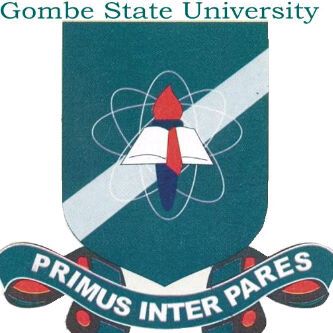Government Keypoints: Constitutional Development in Nigeria; This study material is suitable for students sitting for the following exams: JAMB, WAEC, NECO, GCE, IJMB, and JUPEB. The constitutional development of Nigeria marks a crucial aspect of its history, reflecting the evolution of its governance structures from colonial rule to independence. Over the years, Nigeria underwent several constitutional reforms that shaped its political landscape.
Study more government keypoints here
These transformations were influenced by colonial administrators’ policies, nationalist movements, and demands for self-governance by Nigerians.
Government Keypoints: Constitutional Development in Nigeria
a. Hugh Clifford Constitution (1922)
Features:
- Centralized Power: Concentrated authority in the hands of the Governor.
- Limited Representation: Established a Legislative Council with minimal Nigerian representation.
- Regional Division: Divided Nigeria into three regions: Northern, Southern, and Lagos.
- Governor’s Veto Power: Governor’s approval required for legislative decisions.
- Imposition of Laws: Governor could make laws without council approval in emergencies.
Merits:
- Initial Legislative Structure: Laid the foundation for formal legislative bodies.
- Regional Division Establishment: Paved the way for subsequent regional administrative structures.
- Initiated Legislative Council: Marked the beginning of Nigerian participation in governance.
- Legal Structure Introduction: Established a legal framework for governance.
- Official Recognition: Recognized Nigerian territories within defined regions.
Demerits:
- Limited Nigerian Participation: Restricted representation hindered indigenous involvement.
- Centralized Authority: Concentration of power weakened prospects of self-governance.
- Governor’s Dominance: Governor’s veto power undermined legislative decision-making.
- Minimal Legislative Influence: Legislative Council held minimal influence over governance.
- Inadequate Regional Autonomy: Regions lacked substantial decision-making power.
b. Arthur Richards Constitution (1946)
Features:
- Expanded Representation: Increased Nigerian representation in the Legislative Council.
- Political Party Formation: Enabled the formation of political parties.
- Regional Autonomy: Partial devolution of power to regions.
- Electoral College Formation: Introduced an electoral college system.
- Governmental Structure Enhancement: Strengthened governmental departments.
Merits:
- Increased Representation: Greater inclusion of Nigerians in the Legislative Council.
- Political Awareness: Encouraged political activism through party formations.
- Regional Empowerment: Partial autonomy allowed regions to control specific areas.
- Structured Electoral Process: Electoral college system introduced for governance.
- Administrative Strengthening: Enhanced governmental departments for efficiency.
Demerits:
- Incomplete Autonomy: Regional autonomy remained insufficient.
- Unequal Influence: Disparities in power distribution within the Legislative Council.
- Limited Political Power: Political parties lacked significant decision-making authority.
- Continued Central Dominance: Central government retained substantial power.
- Electoral College Limitations: Electoral system may have favored specific interests.
c. John Macpherson Constitution (1951)
Features:
- Enhanced Regional Autonomy: More powers devolved to regions.
- Federal Structure Reinforcement: Strengthened federalism with shared powers.
- Creation of Regional Legislatures: Establishment of regional Houses of Assembly.
- Local Government Empowerment: Provision for regional and local governance.
- Provisions for Constitutional Amendments: Procedures for making constitutional changes.
Merits:
- Greater Regional Autonomy: Empowered regions for self-governance.
- Federal System Strengthening: Enhanced shared governance between central and regional authorities.
- Regional Legislative Establishment: Regional Houses of Assembly for local governance.
- Local Governance Empowerment: Provisions for regional and local administration.
- Constitutional Flexibility: Procedures for adapting to changing needs through amendments.
Demerits:
- Imbalanced Powers: Disparities among regions affected equitable development.
- National Unity Challenges: Balancing regional autonomy with unity remained complex.
- Potential Constitutional Manipulation: Amendment procedures might be exploited.
- Regional Dominance Concerns: Strong regions could potentially overshadow the central authority.
- Limited Central Oversight: Challenges in maintaining cohesive national governance.
d. Oliver Lyttleton Constitution (1954)
Features:
- Heightened Regional Autonomy: Regions gained increased control over governance.
- Ministerial System Introduction: Implementation of a parliamentary system with regional ministers.
- Federal Parliament Establishment: Creation of a bicameral federal legislature.
- Legal and Judicial Reforms: Introduced legal and judicial changes.
- Financial Autonomy: Provision for regional financial control.
Merits:
- Enhanced Regional Control: Empowered regions for effective self-governance.
- Structured Governance: Parliamentary system with ministers for efficient administration.
- Bicameral Legislature: Strengthened legislative framework for governance.
- Legal System Enhancement: Introduction of legal and judicial reforms.
- Financial Empowerment: Regions had control over their financial matters.
Demerits:
- Ethnic Tensions Intensification: Regional autonomy sometimes heightened ethnic tensions.
- Central Authority Challenges: Balancing regional autonomy with central control remained difficult.
- Legislative Overlap: Potential conflicts between regional and federal legislatures.
- Administrative Complexity: Managing diverse regional interests was challenging.
- Governance Inconsistencies: Disparities in governance structures among regions.
e. Independence Constitution (1960)
Features:
- Grant of Independence: Nigeria achieved full independence from British rule.
- Continuation of Parliamentary System: Continued parliamentary government structure.
- Fundamental Rights Protection: Enshrined provisions safeguarding fundamental rights.
- Creation of Federal Republic: Established Nigeria as a federal republic.
- Citizenship Provisions: Outlined citizenship rights and qualifications.
Merits:
- Independence Attainment: Signified Nigeria’s sovereignty and self-governance.
- Fundamental Rights Protection: Safeguarded citizens’ rights within a democratic framework.
- Federal Republic Establishment: Structured Nigeria as a federal entity.
- Clear Citizenship Guidelines: Outlined criteria for Nigerian citizenship.
- Preservation of Parliamentary System: Continued a familiar governance structure.
Demerits:
- Historical Division Impact: Historical disparities and tensions persisted.
- Structural Weaknesses: Challenges in maintaining stability amidst diversity.
- National Unity Challenges: Struggles in fostering cohesive national unity.
- Regional Influence Concerns: Potential disparities in regional power.
- Continued Ethnic Dynamics: Ethnic diversity affected national cohesion.
Comparative Analysis
- Autonomy Progression: Each constitution aimed to enhance regional autonomy.
- Representation Enhancement: Attempted to increase indigenous representation in governance structures.
- Central Authority Balancing Act: Balancing regional autonomy with a strong central authority persisted as a challenge.
- Ethnic Dynamics Impact: Reflective of Nigeria’s complex ethnic landscape, sometimes intensifying regional tensions.
In conclusion, Nigeria’s constitutional journey witnessed various attempts to balance regional autonomy with effective central governance. Each constitutional phase contributed to shaping the nation’s political landscape, yet challenges in achieving unity, equitable representation, and maintaining a balance of power persisted throughout these transformations.












